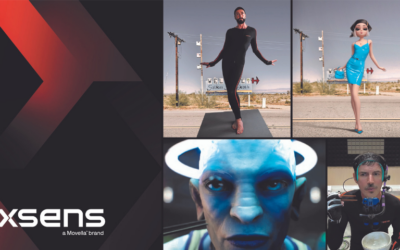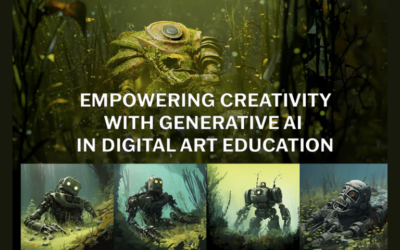Image credit: “From Microfacets to Participating Media: A Unified Theory of Light Transport With Stochastic Geometry” © 2024 Dario Seyb, Eugene d’Eon, Benedikt Bitterli, Wojciech Jarosz
The Technical Papers program is a core element of the SIGGRAPH conference. It is the premier international venue for disseminating and discussing innovative scholarly work in animation, simulation, imaging, geometry, modeling, rendering, human-computer interaction, haptics, fabrication, robotics, visualization, audio, optics, programming languages, immersive experiences, and machine learning for visual computing to name a few. SIGGRAPH 2024 presents a special opportunity of the conference’s return to Colorado for the first time since its 1974 inception, where some of computer graphics’ most pivotal research was initially shared.
Following on the success of SIGGRAPH 2022 and SIGGRAPH 2023, SIGGRAPH 2024 accepted submissions to two integrated paper tracks: Journal (ACM Transactions on Graphics) and Conference. Additionally, SIGGRAPH 2024 continues the tradition of awards for Best Papers and Honorable Mentions. These papers were selected for their research prominence and new contributions to the future of research in computer graphics and interactive techniques.
SIGGRAPH 2024 Technical Papers Chair Denis Zorin is proud to highlight these award-winning papers and thanks the selection committee who chose the Best Papers and Honorable Mentions out of a pool of hundreds.
Learn more about the Best Papers, Honorable Mentions, and Test-of-Time awardees below, get ready to explore what’s next in research at SIGGRAPH 2024.
Best Papers
From Microfacets to Participating Media: A Unified Theory of Light Transport With Stochastic Geometry
We derive a theory of light transport on stochastic implicit surfaces, a geometry model capable of expressing deterministic geometry, microfacet surfaces, participating media, and an exciting new continuum in between containing aggregate appearance, non-classical media, and more. Our model naturally supports spatial correlations, missing from most existing stochastic models.
Dario Seyb, Eugene d’Eon, Benedikt Bitterli, Wojciech Jarosz
Walkin’ Robin: Walk on Stars With Robin Boundary Conditions
We develop a grid-free Monte Carlo method for solving boundary value problems like the Poisson equation with Dirichlet, Neumann, and Robin boundary conditions. Unlike conventional PDE solvers, our method does not require volumetric meshing or global solves. It is robust, embarrassingly parallel, scalable to complex geometry, and allows view-dependent evaluation.
Bailey Miller, Rohan Sawhney, Keenan Crane, Ioannis Gkioulekas
Repulsive Shells
Shape spaces are a powerful tool for nonlinear interpolation, extrapolation, and averaging of geometric data, but previous shape spaces permit geometry to self-intersect in nonphysical ways. We introduce a shape space where geometry naturally avoids intersection, as well as an adaptive collision potential that prevents collision while converging under refinement.
Josua Sassen, Henrik Schumacher, Martin Rumpf, Keenan Crane
Lightning-Fast Method of Fundamental Solutions
This work introduces a variational preconditioner, based on the inverse Cholesky factorization, to improve the efficiency of solving dense systems discretized from boundary integral equations, effectively addressing the scalability issue commonly encountered in boundary-based approaches.
Jiong Chen, Florian Schäfer, Mathieu Desbrun
Robust Containment Queries Over Collections of Rational Parametric Curves via Generalized Winding Numbers
We extend the theory of generalized winding numbers to unstructured collections of rational parametric curves with a numerically stable algorithm, thereby allowing for robust and accurate containment classifications at arbitrary locations for non-watertight and self-intersecting shapes.
Jacob Spainhour, David Gunderman, Kenneth Weiss
Honorable Mentions
Solid Knitting
Yuichi Hirose, Mark Gillespie, Angelica M. Bonilla Fominaya, James McCann
PEA-PODs: Perceptual Evaluation of Algorithms for Power Optimization in XR Displays
Kenneth Chen, Thomas Wan, Nathan Matsuda, Ajit Ninan, Alexandre Chapiro, Qi Sun
CLAY: A Controllable Large-scale Generative Model for Creating High-quality 3D Assets
Longwen Zhang, Ziyu Wang, Qixuan Zhang, Qiwei Qiu, Anqi Pang, Haoran Jiang, Wei Yang, Lan Xu, Jingyi Yu
DressCode: Autoregressively Sewing and Generating Garments From Text Guidance
Kai He, Kaixin Yao, Qixuan Zhang, Jingyi Yu, Lingjie Liu, Lan Xu
Bilateral Guided Radiance Field Processing
Yuehao Wang, Chaoyi Wang, Bingchen Gong, Tianfan Xue
Fabric Tessellation: Realizing Freeform Surfaces by Smocking
Aviv Segall, Jing Ren, Amir Vaxman, Olga Sorkine-Hornung
Capacitive Touch Sensing on General 3D Surfaces
Gianpaolo Palma, Narges Pourjafarian, Jürgen Steimle, Paolo Cignoni
SMERF: Streamable Memory Efficient Radiance Fields for Real-time Large-scene Exploration
Daniel Duckworth, Peter Hedman, Christian Reiser, Peter Zhizhin, Jean-François Thibert, Mario Lučić, Richard Szeliski, Jonathan T. Barron
Spin-It Faster: Quadrics Solve All Topology Optimization Problems That Depend Only on Mass Moments
Christian Hafner, Mickaël Ly, Chris Wojtan
Ray Tracing Harmonic Functions
Mark Gillespie, Denise Yang, Mario Botsch, Keenan Crane
Seamless Parametrization in Penner Coordinates
Ryan Capouellez, Denis Zorin
Theory of Human Tetrachromatic Color Experience and Printing
Jessica Lee, Nicholas Jennings, Varun Srivastava, Ren Ng
Test-of-Time Awards
ACM SIGGRAPH is delighted to announce the 2024 Test-of-Time Award papers that have had a significant and lasting impact on computer graphics and interactive techniques over at least a decade. This is the second year of this annual award. For 2024, the papers presented at SIGGRAPH conferences from 2012 to 2014 were considered by the Test-of-Time Award committee, and the committee selected four winning papers.
3D Shape Regression for Real-Time Facial Animation (2013)
This paper introduces a pioneering method for real-time, accurate 3D face tracking and performance capture using a monocular RGB camera, opening up a way to create realistic facial animations on mobile devices. Read this paper online.
Chen Cao, Yanlin Weng, Stephen Lin, Kun Zhou
Femto-Photography: Capturing and Visualizing the Propagation of Light (2013)
This paper introduces a system for capturing light transport. It produces slow-motion videos of well-known phenomena like reflection and scattering, creating never-seen-before visualizations of core concepts central to computer graphics. Read this paper online.
Andreas Velten, Di Wu, Adrián Jarabo, Belén Masiá, Christopher Barsi, Chinmaya Joshi, Everett Lawson, Moungi Bawendi, Diego Gutiérrez, Ramesh Raskar
Robust Inside-Outside Segmentation Using Generalized Winding Numbers (2013)
This work defines a robust operator for identifying the inner volume of a 3D mesh. It has become a key element of the standard toolbox for manipulating meshes, e.g., for boolean operations between meshes and for tetrahedralization algorithms. Read this paper online.
Alec Jacobson, Ladislav Kavan, Olga Sorkine-Hornung
How do Humans Sketch Objects? (2012)
This paper introduces a first-of-a-kind database of 20,000 sketches of objects and demonstrates how the database can be used. The database has been instrumental in moving forward research in a wide range of areas including sketch generation, cleanup, recognition, and retrieval. Read this paper online.
Mathias Eitz, James Hays, Marc Alexa
Register for SIGGRAPH 2024, taking place 28 July–1 August in Denver, to access the best of the best scholarly research in computer graphics and interactive techniques. View the full program to begin adding Technical Papers sessions to your schedule, and be sure to attend the Papers Fast Forward on Sunday, 28 July at 6 pm MDT.



